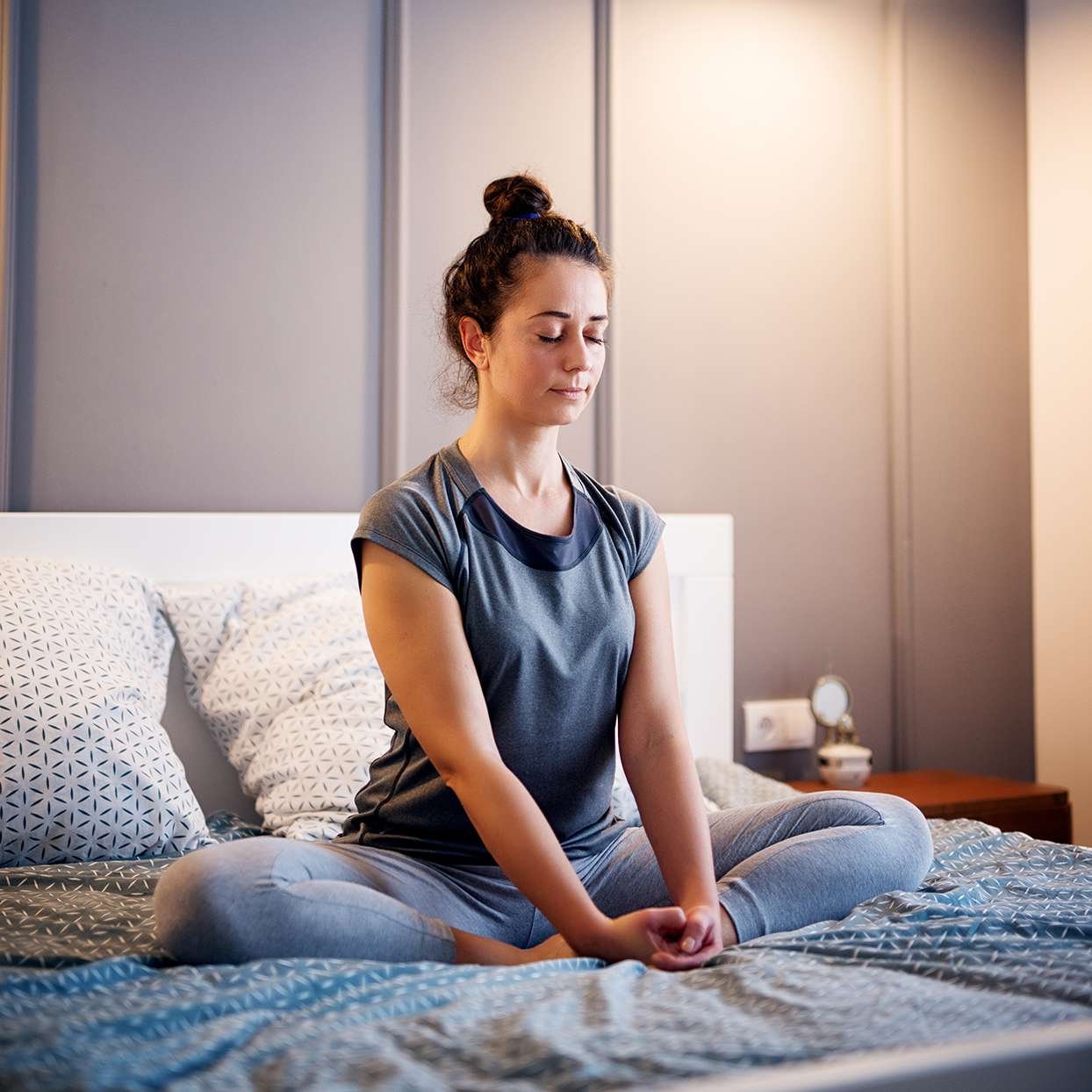Having trouble falling asleep? If counting sheep isn’t working, try these gentle yoga poses designed to calm your mind and relax your body before bed. According to the National Institutes of Health, nearly one-third of adults struggle with insomnia or sleep disturbances—often caused by stress, anxiety, or depression. While yoga isn’t a cure-all, these soothing movements can help release tension, quiet racing thoughts, and prepare your body for deep, restful sleep.
Instead of tossing and turning, sink into this peaceful bedtime yoga sequence—no mat required! For an even more relaxing experience, dim the lights, play soft music (like calming mantras), and rub a few drops of lavender oil on your palms. Combine these poses with slow, mindful breathing, and you might just drift off before finishing the routine.
1: Legs Up the Wall

How to Do It:
Scoot your hips as close to the wall (or headboard) as possible. Extend your legs straight up, resting them against the surface. Let your arms relax out to the sides in a “T” shape, palms facing up. Soften your entire body—release your jaw, relax your forehead, and close your eyes gently. Stay here for 2–5 minutes, focusing on your breath or listening to tranquil music.
Why It Helps:
This pose reverses blood flow, relieving pressure in tired legs and swollen feet. It also decompresses the lower spine, counteracting the effects of sitting all day. The gentle inversion calms the nervous system, signaling to your body that it’s time to rest.
2 and 3: Eye of the Needle

How to Do It:
From Legs Up the Wall, bend both knees and place your left foot flat against the wall. Cross your right ankle over your left thigh, flexing your right foot to protect your knee. For a deeper stretch, gently press your right thigh toward the wall. Keep your hips grounded and spine neutral. Hold for 2–5 minutes, then switch sides.
Why It Helps:
This pose is like a mini massage for your hips and lower back. It loosens tight glutes and piriformis muscles (common culprits of back pain) while improving flexibility in the hip joints—great if you sit for long hours.
4: Frog Pose
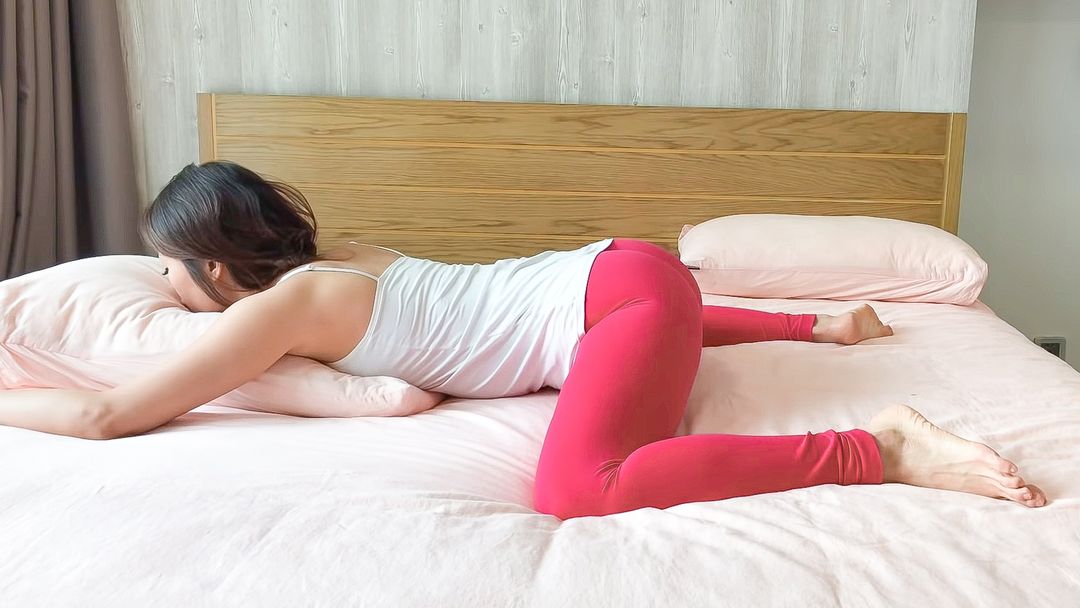
How to Do It:
Start on all fours, then lower onto your forearms. Slowly widen your knees apart, keeping them in line with your hips. Flex your feet so your heels point outward. If your hips are tight, stay higher on your hands. For a deeper stretch, lower your chest toward the bed. Rest your forehead on a pillow if needed. Breathe deeply into your hips for 1–3 minutes.
Why It Helps:
Frog Pose deeply opens the inner thighs and hip flexors, areas where we often hold stress. It also stimulates digestion and gently stretches the spine. As a hip-opener, it’s especially helpful for releasing emotional tension before sleep.
5: Rabbit Pose
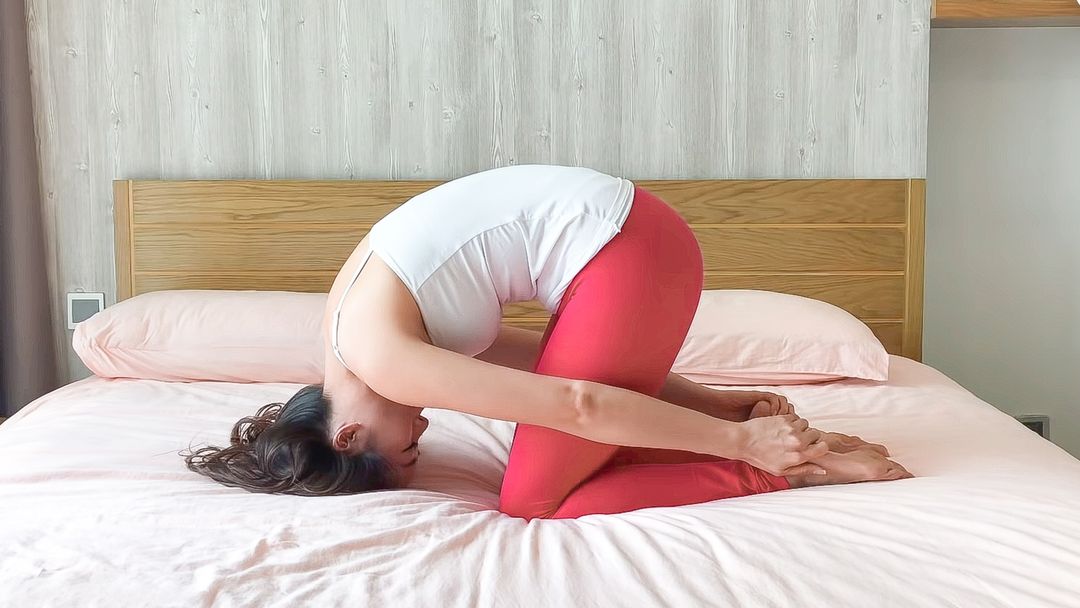
How to Do It:
Kneel with your hips resting on your heels. Tuck your chin and slowly roll forward, bringing the crown of your head toward the bed. Reach back to hold your heels, lifting your hips slightly to round your spine. Keep your neck relaxed—no straining! Hold for 5–10 breaths, feeling a stretch along your entire back.
Why It Helps:
This gentle inversion increases circulation to your brain, promoting mental calmness. The rounded spine position also stretches the muscles between your shoulder blades, where many of us carry stress.
6 and 7: Reclined Spinal Twist

How to Do It:
Lie flat on your back and hug your right knee to your chest. Extend your right arm out to the side, then guide your right knee across your body to the left. Turn your head to the right. For comfort, place a pillow under your knee. Stay for 2–5 minutes, then repeat on the other side.
Why It Helps:
Twists wring out tension in the spine and massage internal organs, aiding digestion. They also stretch the shoulders and chest—areas that tighten when we’re stressed.
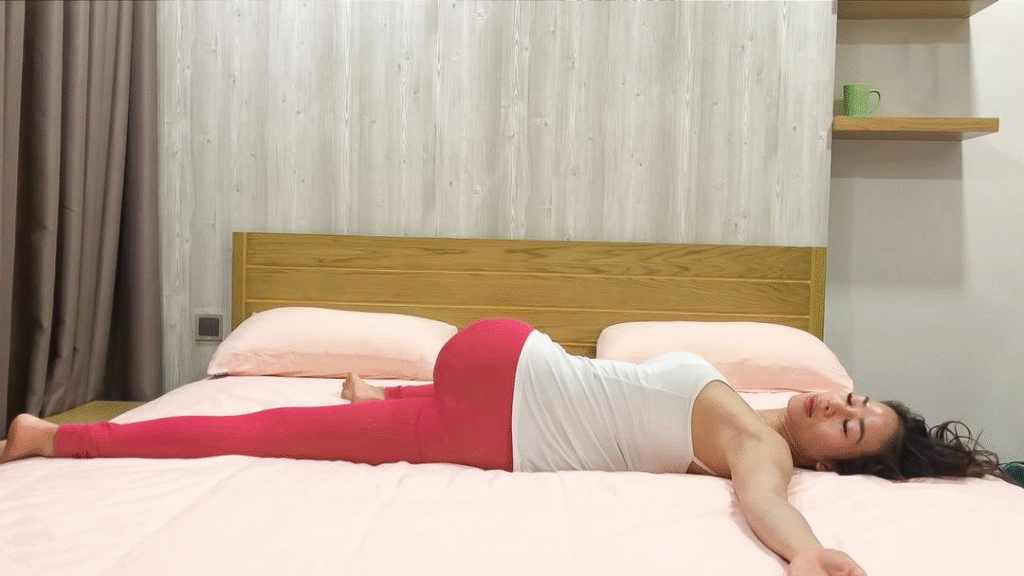
8: Reclining Bound Angle
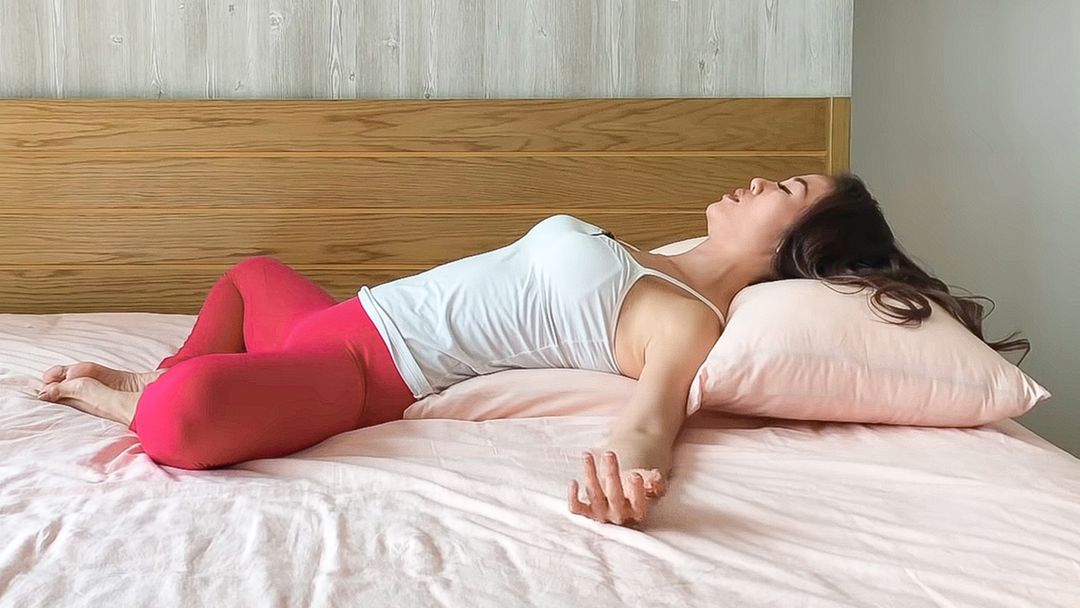
How to Do It:
Lie on your back and bring the soles of your feet together, letting your knees fall open. Place pillows under your thighs if there’s strain. Rest one hand on your belly, the other on your heart, and breathe deeply for 5–15 minutes.
Why It Helps:
This restorative pose opens the hips and groin while encouraging full, diaphragmatic breathing—key for activating the body’s relaxation response.
Final Tip:
Pair these poses with a consistent bedtime routine—like reading or sipping herbal tea—to train your body for better sleep. Sweet dreams!
